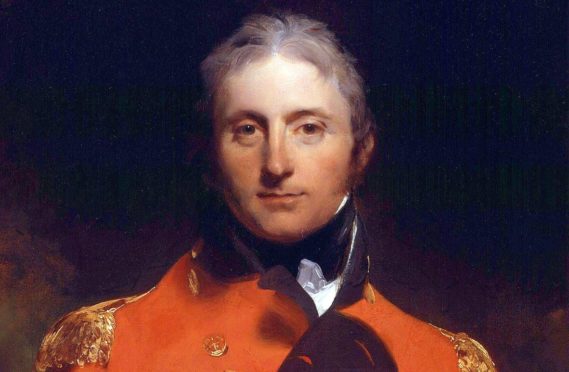
More than 200 years ago, a Scottish general led his troops in a desperate retreat across the frostbitten Spanish mountains.
Sir John Moore and his beleaguered men were being pursued by Napoleon’s army, all the while battling ferocious winter storms and crippling hunger.
Facing the prospect of a crushing defeat, the decision was made to pitch the army’s gold and silver supplies into a ravine to prevent it falling into the French emperor’s hands.
The location of the hoard – now thought to be worth £2 million – has remained a mystery.
Did Moore’s Gold fall into the hands of Napoleon? Was it spirited away by Spanish shepherds? Or does it lie buried under centuries-worth of undergrowth?
A British historian believes he has now discovered the fate of Moore’s Gold following a treasure hunt in a remote region of Galicia in Spain.
The missing treasure had largely been forgotten until John Grehan stumbled across a 10-pence book at a jumble sale.
“About 20 years ago my family and I went to a gymkhana in the New Forest whilst on holiday,” said John, 68.
“I made a beeline straight for the book stall, and picked up a copy of a memoir by an Irish officer in the British Army, called A Boy In The Peninsular War, called Robert Blakeney.
“It was a bargain, only 10p. In it Blakeney writes about the campaign by the British Army in Spain, under Sir John Moore, in the early 19th Century.
“The part that grabbed me in particular was where he described how the gold carried by the army was thrown off a mountain, and seemingly lost forever.”
The chests were mostly filled with Mexican silver dollars, given to the British by their Spanish allies to fund their campaign against the French.
Glasgow-born nobleman Moore led the British forces in Spain and Portugal, but the expedition ended in an epic retreat to escape Napoleon’s forces.
He led his troops through the mountains in the Galicia region towards the Spanish port of Corunna.
Along the way, his forces began to starve in the freezing condition, all while being were relentlessly harried by cannon fire and Napoleon’s cavalry.
Carts hauling chests filled with the army’s pay began to lag as food for the animals towing them ran out.
Eyewitnesses reported the officer in charge ordered the money be thrown off the snowy mountain pass into a deep ravine.
“It must have been quite an image for these soldiers to see,” said John. “At the time they served for one shilling a day… £25,000 (the sum lost) would have been a fortune.”
What waited for the British troops was a Dunkirk-style evacuation from the Spanish port of Corunna.
Sir John Moore met his fate in that battle via cannon shot to the chest, but what happened to the gold became a mystery.
Two hundred years later, the missing bullion became the subject of a treasure hunt for John Grehan after the discovery of the old book.
Last year he launched an expedition to the remote region of Galicia.
Using a mix of historical knowledge and local legends about the location of the gold, John outlines in his book, The Hunt For Moore’s Gold, how he explored various locations in the Galician mountains.
“I’m not sure what I’d have done if I’d found it,” said John. “I suppose it still belongs to the British Army.”
As for the Scottish general who lost the gold and the campaign against Napoleon, his standing was unfairly left damaged by the retreat to Corunna.
“Moore has a controversial reputation for his role in the Peninsular War, but it isn’t really deserved,” explained John. “He was getting conflicting information coming from all over the place, which undermined his efforts.”
John says his hunt for the gold will continue, and a Spanish author is continuing the search in the region.
And John believes he knows what happened to the gold.
“Word would have quickly gotten out about this discarded chest,” he added. “And the locals would probably have been aware of its rough location.
“The owner of a considerable estate, called Vicente Rivera, possessed a large number of farms worked on by peasant farmers.
“At the end of the Peninsular War, he was able to sell all his farms.
“He was able to do this because the peasants suddenly found the money to buy the farms for themselves.
“Or perhaps the money was hidden somewhere by careful locals.”
The Hunt For Moore’s Gold by John Grehan, Pen and Sword, is out now

Enjoy the convenience of having The Sunday Post delivered as a digital ePaper straight to your smartphone, tablet or computer.
Subscribe for only £5.49 a month and enjoy all the benefits of the printed paper as a digital replica.
Subscribe